Prayerful Churches in Old Sydney
Sydney is a city of mainly old churches, and having visited many of them in search of stained glass windows, I found two of them particularly prayerful. Both are in the oldest part of Sydney known as The Rocks.
Holy Trinity Garrison Church
Reached through an archway underneath the approaches to the bridge is the Garrison Church. It was completed in 1844 to serve a British Army contingent, which it did until the unit was withdrawn in 1870. Built of sandstone blocks, it has a very high roof for its size.
 We entered on a very hot day, and the inside was a cool relief. At first, I thought the church was quite bare and so a bit sterile. I wondered if the church was being maintained for historical interest, because there was no altar. But there are still two services there on a Sunday.
We entered on a very hot day, and the inside was a cool relief. At first, I thought the church was quite bare and so a bit sterile. I wondered if the church was being maintained for historical interest, because there was no altar. But there are still two services there on a Sunday.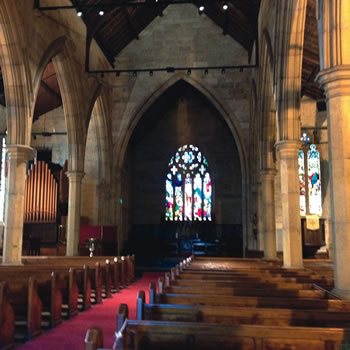
Then I stopped acting like a tourist and started to absorb the utterly peaceful atmosphere. I couldn’t help putting myself in the place of the soldiers of the 1840s, living in a much more Christian era, charged with keeping order and controlling convicts, in heat all day wearing their hot red serge uniforms, and finding one place of refuge - the church I was in. No wonder the atmosphere was so peaceful.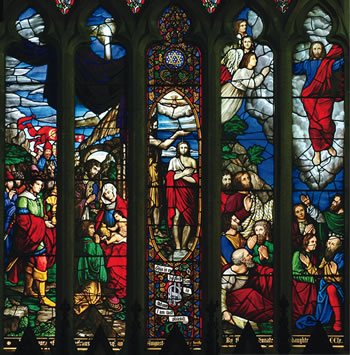
The East Window was installed in 1861, showing scenes of the Adoration of the Shepherds, the Baptism of Jesus, and the Ascension. It was described as “one of the most beautiful windows in Australia” by the Sydney Morning Herald in 1931.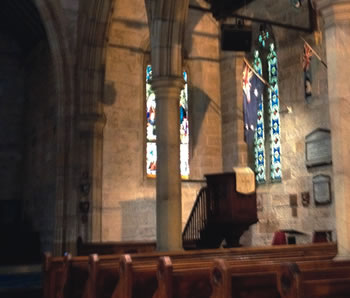
Then I noticed the pulpit, high off to one side. I climbed up to it, imagined myself looking down on a full church with a mixture of red uniforms and convict sackcloth. 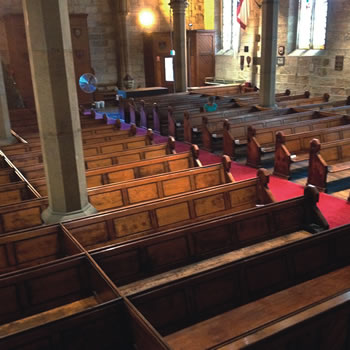
It would have been so easy to preach hellfire and damnation! Instead I hoped that the minister had preached compassion and love and tolerance, and that was the reason the church felt so peaceful.
St Patrick’s Church, Church Hill
The other church is St Patrick’s Church in Grosvener St, Church Hill. It was also completed in 1844, and was a diocesan church until it was handed to the Society of Mary in 1868. The then French Marists ministered to a largely Irish congregation – surely a difficult task!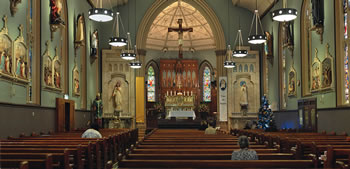
The stained glass windows in the church interested me a few years ago, but after three visits I had been unable to photograph them because of the incessant Masses being said. Sundays, every hour on the hour. Weekdays all morning and into the afternoon. Confessions in between. So this Christmas, house-sitting for my daughter, my wife and I journeyed into the city and tried once more, with the same result, except this time we stayed and attended the Mass. Undeterred, we journeyed into the city again the following Sunday, and after Mass talked to a friendly parishioner on duty. He advised me to come at 2pm on a weekday, after the last lunchtime Mass – but I would need permission from the Parish Priest to photograph.
Before we entered the church, our eyes were drawn to a Marian grotto in the courtyard beside the church, (above) with St Joseph in the background.
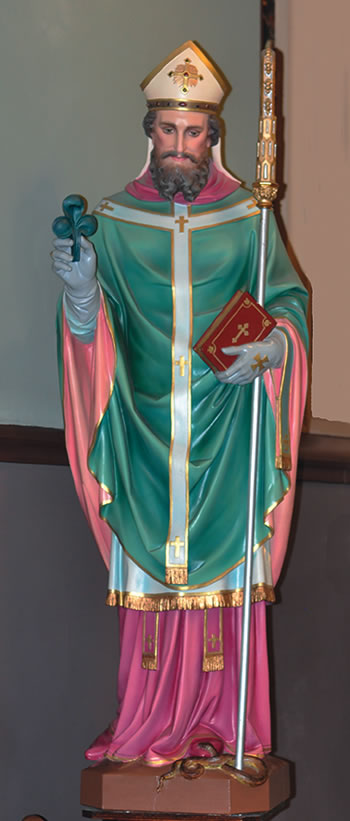 St Patrick’s is an odd mixture. Built of sandstone blocks, the internal walls are beautifully plastered. The Stations of the Cross are works of art. The ususal Sacred Heart and Our Lady statues on each side of the sanctuary are perfect. There are 12 statues high on the walls, not counting a beautiful one of St Patrick at floor level next to the Sacred Heart and two of St Peter Chanel and St Joseph in the little side chapel at the back. There are at least 20 stained glass windows, most dating from the 1800s.
St Patrick’s is an odd mixture. Built of sandstone blocks, the internal walls are beautifully plastered. The Stations of the Cross are works of art. The ususal Sacred Heart and Our Lady statues on each side of the sanctuary are perfect. There are 12 statues high on the walls, not counting a beautiful one of St Patrick at floor level next to the Sacred Heart and two of St Peter Chanel and St Joseph in the little side chapel at the back. There are at least 20 stained glass windows, most dating from the 1800s.
The imposing high altar of polished brass dominates the sanctuary. But my eyes were consistently drawn to the crucifix, suspended in midair above the altar and back-lit by the domed sanctuary roof . 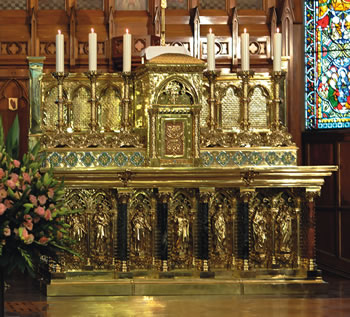
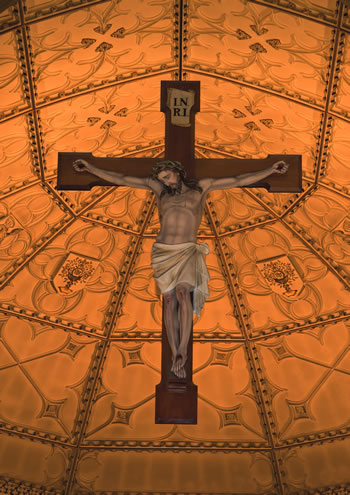 Of special significance to us was the small side chapel at the rear of the church (pictured below). There was a queue to light candles there after each Mass, and my wife and I lit our fair share, asking the Lord to care for our family members.
Of special significance to us was the small side chapel at the rear of the church (pictured below). There was a queue to light candles there after each Mass, and my wife and I lit our fair share, asking the Lord to care for our family members.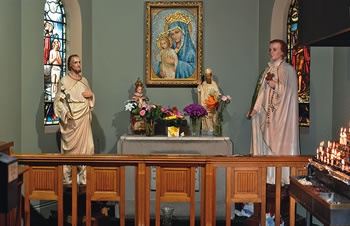
The real impact of the church is its spirituality. Incessant Masses and Confessions over the last 170 years have left their mark on the church, and as a result I have been drawn back time and time again during my visits to Sydney. Many generations of Marist priests, sisters and brothers have devoted themselves in ministry there with “gentleness, mercy and compassion,” according to the information leaflet about the church.
The truth of that statement shows in this very prayerful church, and exemplifies what I have come to see as Marist spirituality.

 Entries(RSS)
Entries(RSS)